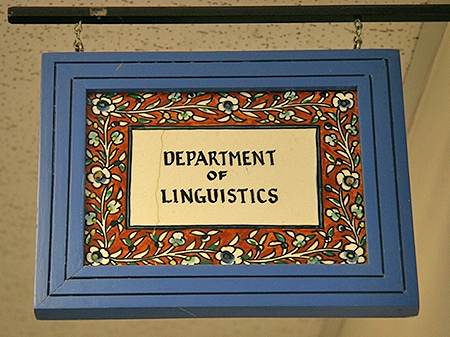
Linguistics ETDs
Publication Date
Spring 4-15-2019
Abstract
Prior research on representational hand gestures has shown that an object’s affordances influence both the likelihood that it will be indexed in a representational gesture, and the form of the gesture used to refer to it. Objects which afford being held are associated with higher gesture rates than objects which do not afford being held. Further research has shown that the ways humans prototypically interact with an object also influence the reference technique used to refer to that object through a hand gesture. An object that people interact with manually will tend to be indexed through a gesture imitating the action associated with interacting with the object (called an acting gesture), while an object that people do not normally interact with manually will tend to be indexed through gestures depicting its shape (called molding and drawing gestures). Results from studies looking at neuroimaging and gesture production suggest that these differences in representation techniques are the result of the simulated action of interacting with the referent of the gesture. This aligns with Cognitive Grammar’s claim that an utterance’s profile is construed in relation to its conceptual base. Using data from narrations of the Pear Film, this study proposes a subtype of acting gesture—here termed handling gesture—and analyzes its various grammatical functions. It posits that the handling gesture is used to profile the various elements within a manual interaction event—which include an object that affords manual interaction, an agent, and the action the agent performs on the object. By applying theory from Cognitive Grammar and conceptual integration to an analysis of the handling gesture, this paper argues that handling gestures are used to construe physical objects as participants of manual interaction events and to establish an utterance’s schematic structure, which is elaborated by the speech.
Language
English
Keywords
Gesture; Cognitive Grammar; Handling Gesture; Conceptual Integration; Affordances; Objects
Document Type
Thesis
Degree Name
Linguistics
Level of Degree
Masters
Department Name
Department of Linguistics
First Committee Member (Chair)
Sherman Wilcox
Second Committee Member
Barbara Shaffer
Third Committee Member
Jill Morford
Recommended Citation
Smith, Ryan D.. "Simulated Manual Interaction as the Conceptual Base for Reference and Predication: A Cognitive Grammar Analysis of the Integration Between Handling Gestures and Speech." (2019). https://digitalrepository.unm.edu/ling_etds/61
